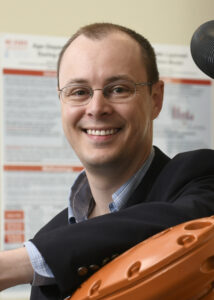| EMAIL: |
| PERSONAL WEBSITE: |
| PUBLICATIONS: |

His long-term research goal is to utilize quantitative metrics and engineering principles to understand why individual tissue engineering and regenerative medicine approaches succeed within the body and employ this knowledge to develop superior technologies, with a strong focus on orthopaedic soft tissues. Specific areas of interest include bioscaffolds, prediction of outcomes following implantation, and assessment of function following treatment. Understanding Post-Natal Musculoskeletal Soft Tissue Growth in the Porcine Model Recent work has focused on understanding musculoskeletal soft tissue growth within the context of the knee joint. Initial studies have focused on the anterior cruciate ligament (ACL), an increasingly common injury in children and adolescents. The porcine model has been used to study knee joint growth via MR imaging, joint level biomechanics using robotics, computational modeling, and additional analyses. Advanced Manufacturing for Fibrous Soft Tissue Regeneration This work focuses on applying advanced manufacturing approaches (3D printing, nonwovens, etc.) to create fibrous soft tissue replacements. An example can be found here: https://news.ncsu.edu/2019/06/revolution-regenerative-medicine/ . We also use in-vitro models to screen potential scaffolds and use preclinical models to assess in-vivo success. Tdesign of 3D printed scaffolds for soft tissue regeneration.
|
UNC AFFILIATIONS:
Biomedical Engineering, Orthopaedics, Thurston Arthritis Center |
CLINICAL/RESEARCH INTERESTS:
Arthritis, Biomaterials, Biomechanics, Biomedical Engineering, Orthopaedics, Pediatrics, Regenerative Medicine, Rehabilitation, Translational Medicine |